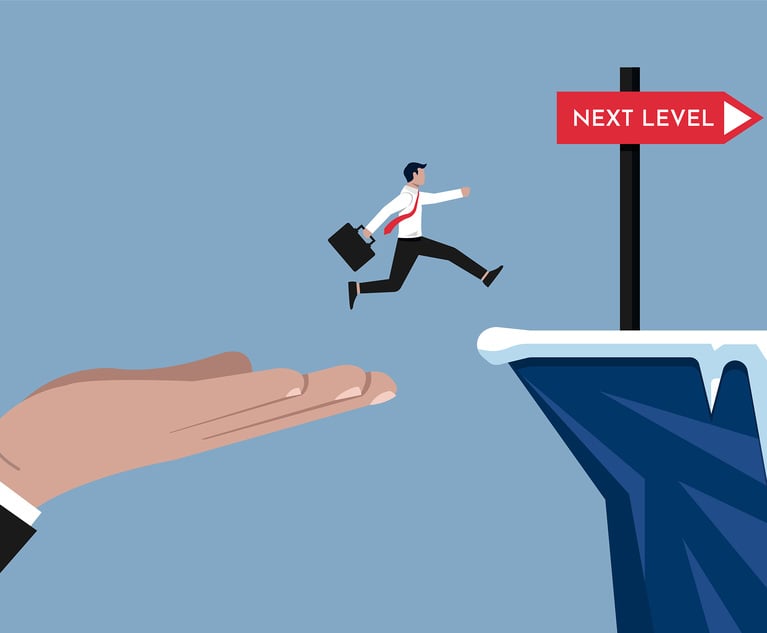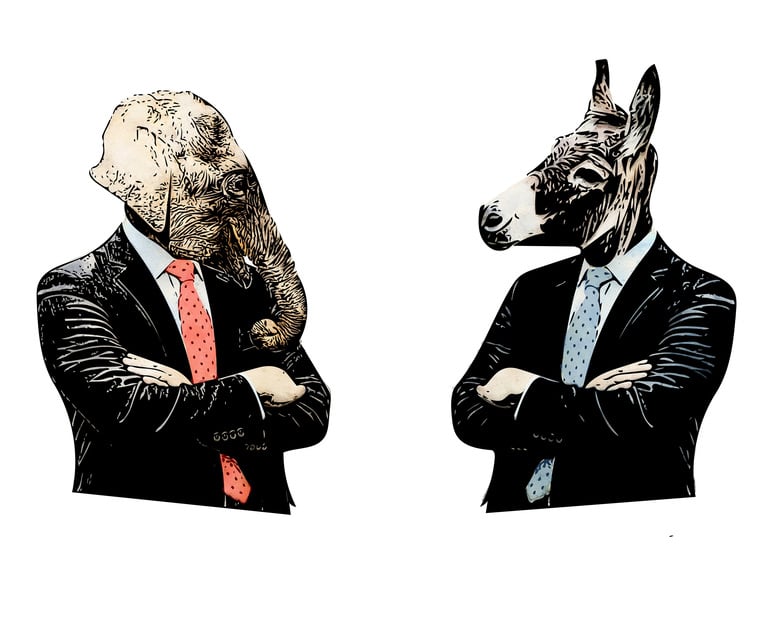Captain Planet
James T.B. Tripp represents the Earth as general counsel for the Environmental Defense Fund.
March 31, 2009 at 08:00 PM
12 minute read

James T.B. Tripp
From childhood birding trips with his father to afternoons spent picking up discarded glass bottles in Central Park with his own sons, James T.B. Tripp's life has always revolved around nature. He's also been part of the legal fight to preserve the planet since nearly Day One of the environmental movement.
Tripp started his career in the late 1960s as an assistant U. S. attorney for the Southern District of New York, where he worked on a case dealing with unlawful water contamination under the Rivers and Harbors Act of 1899.
“It was different from white collar crime work or tax fraud and those kinds of cases that were the meat and butter of that office,” he says. “It just struck me as being interesting.”
So it seemed like fate when the Environmental Defense Fund (EDF), one of the nation's largest environmental non-profits, had an opening in the legal department when Tripp left the U.S. attorney's office in 1973.
Tripp became EDF's general counsel in 1983 and today oversees all legal action initiated by the group, which uses a blend of science, economics and law to promote sustainability. What started as a professional interest has become very personal for Tripp as he witnesses first hand the effects of climate change.
“I see damage being done,” he says. “I think it's outlandish. And I want to do something about it.”
Q: How does your work differ from that of a typical corporate GC?
A: There are a whole lot of issues important to a corporate entity on which I work relatively little. I don't do real estate work or contract work for EDF. Basically my role as general counsel is to oversee the approval and continued oversight of the litigation that we're doing.
Q: What pivotal litigation have you spearheaded during your career?
A: When the California Air Resources Board adopted a motor vehicle carbon dioxide emission standard program in the fall of 2004, it was clear the auto industry would challenge it. As it turned out, the only real live trial dealing with the legality of that very, very important California initiative was before a federal court in Burlington, Vt., in April and May of 2007, and I was deeply involved in that trial. We got, from our point of view, a very good decision in September of 2007 [the judge upheld the legality of the stricter standards], and the case is now on appeal. But that was clearly one of the highlights of my professional career.
Q: How do you decide when to pursue litigation?
A: There are probably 200 members of the program staff–lawyers, scientists, economists, policy types. If you look at all their projects, we're trying to get things done by working with the scientific community and through advocacy in various forms. But sometimes litigation is the best tool we have. In my view it's a very powerful tool, if used effectively and judiciously.
Q: Where do you think environmental litigation is heading?
A: My overall expectation and hope is that there may be a lot less of it over the next 10 years. But there will always be a need for national environmental groups, as well as state groups, to have litigation capacity, because even under the best circumstances, federal agencies with environmental mandates may do things that we think are wrong and need to get corrected. And litigation is one way of doing it.
Q: What kind of regulatory changes do you anticipate with the new administration?
A: There are serious air pollution-related health and environmental problems, and I hope our time and energy would be going into working with the new EPA [Environmental Protection Agency] to develop effective regulations and programs for addressing those issues. The new administrator [Lisa Jackson] has said that she's going to review the decision by her predecessor to deny a waiver California requested in order to implement this very crucial motor vehicle emissions standard program. That will certainly be a good test of where we're going.
Q: Do environmental groups and business have any common interests?
A: EDF has made a serious effort over the years to work with corporate partners. That happened in a big way in 1989 when [the elder] President Bush took on acid rain. We worked closely with all kinds of corporate partners, as well as our environmental partners, EPA, and federal and state agencies, to put together the sulfur dioxide cap and trade emissions program incorporated into the 1990 amendments to the Clean Air Act.
So that kind of thing can happen, and there's a big effort underway to develop that kind of broad partnership and support of carbon [cap and trade] legislation.
Q: Throughout your years at EDF you've fought passionately for the preservation and restoration of the Mississippi Delta. What led to this interest?
A:When I started at EDF, I took over some litigation already underway against the Army Corps of Engineers and TVA [Tennessee Valley Authority] trying to stop projects that were destroying Southern river and wetland systems. Then a lawyer in Louisiana called me in the fall of 1973 about some litigation trying to stop a Corps of Engineers project where bridge spoils were going to be placed on 8,000 acres of coastal wetlands, and I just thought that was outlandish.
A scientist gave me a briefing on the basic geology of the system when I went down to New Orleans for the first time. It's mind-bogglingly complex and fascinating, and I just got hooked. It's by far North America's largest deltaic ecosystem–much more important to oceanic resources and coastal fisheries than anyone realizes.
Q: How do you integrate sustainable living into your own life?
A:I have what I tell people is the most magnificent chauffeured transportation system in the country, if not the world: the MTA [Metropolitan Transportation Authority] subway and bus system. Someone else does the driving, and I can work, or I can read the New York Times or The Economist. I'm sure there are many people who don't like the packed bunches of humanity in a subway car; I happen to love it. And whenever I'm in such a subway car, I say to myself, “What's the per capita energy consumption of these people going to work or going shopping or wherever they're going?” Well, it's quite low, and that's good.

James T.B. Tripp
From childhood birding trips with his father to afternoons spent picking up discarded glass bottles in Central Park with his own sons, James T.B. Tripp's life has always revolved around nature. He's also been part of the legal fight to preserve the planet since nearly Day One of the environmental movement.
Tripp started his career in the late 1960s as an assistant U. S. attorney for the Southern District of
“It was different from white collar crime work or tax fraud and those kinds of cases that were the meat and butter of that office,” he says. “It just struck me as being interesting.”
So it seemed like fate when the Environmental Defense Fund (EDF), one of the nation's largest environmental non-profits, had an opening in the legal department when Tripp left the U.S. attorney's office in 1973.
Tripp became EDF's general counsel in 1983 and today oversees all legal action initiated by the group, which uses a blend of science, economics and law to promote sustainability. What started as a professional interest has become very personal for Tripp as he witnesses first hand the effects of climate change.
“I see damage being done,” he says. “I think it's outlandish. And I want to do something about it.”
Q: How does your work differ from that of a typical corporate GC?
A: There are a whole lot of issues important to a corporate entity on which I work relatively little. I don't do real estate work or contract work for EDF. Basically my role as general counsel is to oversee the approval and continued oversight of the litigation that we're doing.
Q: What pivotal litigation have you spearheaded during your career?
A: When the California Air Resources Board adopted a motor vehicle carbon dioxide emission standard program in the fall of 2004, it was clear the auto industry would challenge it. As it turned out, the only real live trial dealing with the legality of that very, very important California initiative was before a federal court in Burlington, Vt., in April and May of 2007, and I was deeply involved in that trial. We got, from our point of view, a very good decision in September of 2007 [the judge upheld the legality of the stricter standards], and the case is now on appeal. But that was clearly one of the highlights of my professional career.
Q: How do you decide when to pursue litigation?
A: There are probably 200 members of the program staff–lawyers, scientists, economists, policy types. If you look at all their projects, we're trying to get things done by working with the scientific community and through advocacy in various forms. But sometimes litigation is the best tool we have. In my view it's a very powerful tool, if used effectively and judiciously.
Q: Where do you think environmental litigation is heading?
A: My overall expectation and hope is that there may be a lot less of it over the next 10 years. But there will always be a need for national environmental groups, as well as state groups, to have litigation capacity, because even under the best circumstances, federal agencies with environmental mandates may do things that we think are wrong and need to get corrected. And litigation is one way of doing it.
Q: What kind of regulatory changes do you anticipate with the new administration?
A: There are serious air pollution-related health and environmental problems, and I hope our time and energy would be going into working with the new EPA [Environmental Protection Agency] to develop effective regulations and programs for addressing those issues. The new administrator [Lisa Jackson] has said that she's going to review the decision by her predecessor to deny a waiver California requested in order to implement this very crucial motor vehicle emissions standard program. That will certainly be a good test of where we're going.
Q: Do environmental groups and business have any common interests?
A: EDF has made a serious effort over the years to work with corporate partners. That happened in a big way in 1989 when [the elder] President Bush took on acid rain. We worked closely with all kinds of corporate partners, as well as our environmental partners, EPA, and federal and state agencies, to put together the sulfur dioxide cap and trade emissions program incorporated into the 1990 amendments to the Clean Air Act.
So that kind of thing can happen, and there's a big effort underway to develop that kind of broad partnership and support of carbon [cap and trade] legislation.
Q: Throughout your years at EDF you've fought passionately for the preservation and restoration of the Mississippi Delta. What led to this interest?
A:When I started at EDF, I took over some litigation already underway against the Army Corps of Engineers and TVA [Tennessee Valley Authority] trying to stop projects that were destroying Southern river and wetland systems. Then a lawyer in Louisiana called me in the fall of 1973 about some litigation trying to stop a Corps of Engineers project where bridge spoils were going to be placed on 8,000 acres of coastal wetlands, and I just thought that was outlandish.
A scientist gave me a briefing on the basic geology of the system when I went down to New Orleans for the first time. It's mind-bogglingly complex and fascinating, and I just got hooked. It's by far North America's largest deltaic ecosystem–much more important to oceanic resources and coastal fisheries than anyone realizes.
Q: How do you integrate sustainable living into your own life?
A:I have what I tell people is the most magnificent chauffeured transportation system in the country, if not the world: the MTA [Metropolitan Transportation Authority] subway and bus system. Someone else does the driving, and I can work, or I can read the
This content has been archived. It is available through our partners, LexisNexis® and Bloomberg Law.
To view this content, please continue to their sites.
Not a Lexis Subscriber?
Subscribe Now
Not a Bloomberg Law Subscriber?
Subscribe Now
NOT FOR REPRINT
© 2025 ALM Global, LLC, All Rights Reserved. Request academic re-use from www.copyright.com. All other uses, submit a request to [email protected]. For more information visit Asset & Logo Licensing.
You Might Like
View All
Beyond the Title: Developing a Personal Brand as General Counsel

Step 1 for Successful Negotiators: Believe in Yourself
Trending Stories
- 1Decision of the Day: Uber Cannot Be Held Vicariously Liable for Driver's Alleged Negligent Conduct
- 2TikTok Law and TikTok Politics
- 3California Supreme Court Vacates Murder Conviction in Infant Abuse Case
- 4New York’s Proposed Legislation Restraining Transfer of Real Property
- 5Withers Hires Lawyers, Staff From LA Trusts and Estates Boutique
Who Got The Work
Michael G. Bongiorno, Andrew Scott Dulberg and Elizabeth E. Driscoll from Wilmer Cutler Pickering Hale and Dorr have stepped in to represent Symbotic Inc., an A.I.-enabled technology platform that focuses on increasing supply chain efficiency, and other defendants in a pending shareholder derivative lawsuit. The case, filed Oct. 2 in Massachusetts District Court by the Brown Law Firm on behalf of Stephen Austen, accuses certain officers and directors of misleading investors in regard to Symbotic's potential for margin growth by failing to disclose that the company was not equipped to timely deploy its systems or manage expenses through project delays. The case, assigned to U.S. District Judge Nathaniel M. Gorton, is 1:24-cv-12522, Austen v. Cohen et al.
Who Got The Work
Edmund Polubinski and Marie Killmond of Davis Polk & Wardwell have entered appearances for data platform software development company MongoDB and other defendants in a pending shareholder derivative lawsuit. The action, filed Oct. 7 in New York Southern District Court by the Brown Law Firm, accuses the company's directors and/or officers of falsely expressing confidence in the company’s restructuring of its sales incentive plan and downplaying the severity of decreases in its upfront commitments. The case is 1:24-cv-07594, Roy v. Ittycheria et al.
Who Got The Work
Amy O. Bruchs and Kurt F. Ellison of Michael Best & Friedrich have entered appearances for Epic Systems Corp. in a pending employment discrimination lawsuit. The suit was filed Sept. 7 in Wisconsin Western District Court by Levine Eisberner LLC and Siri & Glimstad on behalf of a project manager who claims that he was wrongfully terminated after applying for a religious exemption to the defendant's COVID-19 vaccine mandate. The case, assigned to U.S. Magistrate Judge Anita Marie Boor, is 3:24-cv-00630, Secker, Nathan v. Epic Systems Corporation.
Who Got The Work
David X. Sullivan, Thomas J. Finn and Gregory A. Hall from McCarter & English have entered appearances for Sunrun Installation Services in a pending civil rights lawsuit. The complaint was filed Sept. 4 in Connecticut District Court by attorney Robert M. Berke on behalf of former employee George Edward Steins, who was arrested and charged with employing an unregistered home improvement salesperson. The complaint alleges that had Sunrun informed the Connecticut Department of Consumer Protection that the plaintiff's employment had ended in 2017 and that he no longer held Sunrun's home improvement contractor license, he would not have been hit with charges, which were dismissed in May 2024. The case, assigned to U.S. District Judge Jeffrey A. Meyer, is 3:24-cv-01423, Steins v. Sunrun, Inc. et al.
Who Got The Work
Greenberg Traurig shareholder Joshua L. Raskin has entered an appearance for boohoo.com UK Ltd. in a pending patent infringement lawsuit. The suit, filed Sept. 3 in Texas Eastern District Court by Rozier Hardt McDonough on behalf of Alto Dynamics, asserts five patents related to an online shopping platform. The case, assigned to U.S. District Judge Rodney Gilstrap, is 2:24-cv-00719, Alto Dynamics, LLC v. boohoo.com UK Limited.
Featured Firms
Law Offices of Gary Martin Hays & Associates, P.C.
(470) 294-1674
Law Offices of Mark E. Salomone
(857) 444-6468
Smith & Hassler
(713) 739-1250








